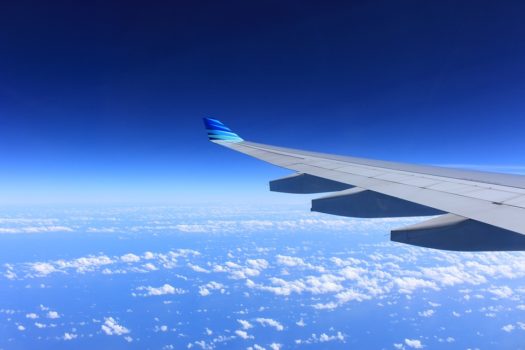Advertisers Face More Complexity Navigating APAC Travel Consumer Journey

Compared to other regions, marketers in Asia-Pacific need to deal with more complexity in order to communicate with their audience more effectively.
Their campaigns have to include multiple markets, languages, and media formats, says Russell Young, Sojern's Asia-Pacific managing director, pointing to the potential for programmatic to help address these challenges.
In this Q&A with ExchangeWire, Young explains why consumers today still see irrelevant ads and urges travel companies to serve fewer, but more targeted, online ads to better engage with travellers in the region.
ExchangeWire: What remains challenging to deliver and support in terms of cross-device performance monitoring/measurement, especially in Asia-Pacific's highly fragmented mobile landscape?
Russell Young: One of the biggest challenges is the lack of uniformity in technological development across the region. For instance, being mobile-first means something different in every country. There is an entire spectrum of use cases for mobile phone adoption; and they differ wildly from country to country, which is why there can be no one pan-strategy for Asia-Pacific as a whole.
Smartphone penetration in Singapore, for example, is the highest in the world, at 70.5%, whereas in India or Indonesia, the majority of mobile phone purchases are still feature-phones rather than smartphones. Consumers operating feature-phones have smaller screens and lower bandwidth to consume advertising; so you have to keep that in mind when tailoring marketing campaigns to each of these regions.
How we address such nuances at Sojern is to tailor programmatic campaigns to the specifics of the audience. Through regional and global partnerships with key travel brands, online travel agencies, and metasearch providers, we have access to billions of data points on search and booking behaviour. Together with the right predictive intelligence and targeting algorithms honed over years of experience, these allow us to build a sharp picture of specific traveler audience segments and match them with the right ad at the right time.

Russell Young, Asia-Pacific MD, Sojern
What do brands need to know to market more effectively to Asia-Pacific travellers?
First, we know that programmatic adoption by marketeers in Asia-Pacific is on the rise, which is an exciting trend. However, here's the thing to keep in mind: having access to accurate data and effective targeting are the key ingredients to making your programmatic campaigns effective.
As an advertiser, you need a partner with exceptional infrastructure and engineering capabilities to be able to optimise bid prices and creative decisions at scale – but, data is the most important component. When you're using rich datasets to target consumers exactly when they need, with exactly what they need, it's pure magic. It isn't an ad at all, it's a deal.
By analysing rich datasets, we can begin to see clearly when a traveller is in research or consideration mode to identify the window of influence before booking. For instance, someone at the research stage, and who is searching for general flights for Asian beach destinations, can be targeted with an inspirational video ad from a national tourism board or photographs from a hotel group showing off a range of beautiful properties across the region. The clearer the destination intention becomes, the greater the specificity of the ad.
We also know that travellers in Asia-Pacific have slightly different search and booking patterns than those from other markets. For example, travellers in this region are 37% more likely to take a trip of between 0 and 3 days, and are 22% more likely to book at least 60 days in advance, compared to travellers in the Middle East and Africa. So it's critical to adjust your campaign targeting and flighting accordingly.
Marketing channels matter, too, in this region, where tablets are used significantly more often to view video than the rest of the world. This presents a rich branding opportunity that has the ability to drive multiple engagements with the viewer and to influence before they make the big decision.
What are some misconceptions here, for instance, in terms of how marketeers approach travel consumers, that you would like to address?
That all travellers in Asia-Pacific can be targeted in the same way when, in fact, our data reveals travellers differ significantly by point of origin, destination, and purpose of travel. By analysing booking windows, trip duration, party size, and other factors, it's possible to create significantly higher engagement and response rates.
Another misconception is that a blanket approach to marketing across the region will yield the necessary results. Making allowances for channel preferences, cultural differences, and multiple languages shouldn't just be a consideration, it is essential for any pan-Asian marketeer.
Highlight some key challenges marketeers today face in targeting consumers here.
Asia-Pacific marketeers often need to create far more complex marketing plans than their peers in other regions to communicate with their audience on a one-to-one level. The majority of campaigns here include multiple markets, multiple languages, and multiple devices and media formats; so implementing new campaigns can be complicated and time consuming.
Also, each market has its own nuances and if your campaign performed well in Singapore, that's not a guarantee by any means that you'll see the same performance in Japan. Furthermore, in China, marketeers need to consider the rise of the 'swiss-army-knife' app, WeChat. If you're trying to build another app outside of that ecosystem in the mobile environment, you may be disappointed with the results.
Japan also is different as far as programmatic is concerned and has a high context culture, but industry insiders observe that the programmatic layer of the marketing mix is not yet claimed by any of the big players. There are lots of opportunities there for bold players to try new things and gain a foothold with Japanese consumers.
Marketers at ATS SG 2016 noted the complexity in running mobile campaigns. What do you think is creating the complexity and frustration?
Mobile is a distinct ecosystem to desktop, which means that a lot of the standard practices that marketers used in a desktop-only world have changed. While cookies are still the primary currency of user measurement on desktop, mobile user identification includes thousands of variations in mobile device hardware, multiple operating systems and browsers, millions of apps using different ad-serving platforms, and more. Complexity is driven through the challenge of connecting users to device IDs across an ecosystem that has yet to be standardised.
That said, new solutions now have been built to simplify this complexity and make it easier to effectively advertise on mobile, by enabling advertisers to select specific audiences based on their behaviour with as much precision as in the desktop environment.
What do ad tech providers need to do to help simplify things for marketers?
Generally, travel companies should be striving to serve fewer online ads, but ensure those ads are more targeted and more relevant. Delivering ads based on demographic segmentation alone means you'll miss the window during which those individual users are actually in-market. Ad tech providers need to help advertisers zoom in on individual behaviour and user intent in order to serve much more focused, relevant, and smart advertising.
Despite tech advancements in targeting and data analytics, ads are still showing up too often and at the wrong time. Why are these issues still popping up?
The reality is that programmatic advertising technology has made it easier for brands to reach more consumers than ever with more ads. However, programmatic is a tool that, like all tools, is still evolving and requires a significant amount of advertiser education – and human intervention, at times – to get right.
Two issues come up on occasion that cause consumers to see irrelevant ads at the wrong time: imperfect targeting that doesn't take into account where the consumer is on the path to purchase, and a lack of frequency caps in which advertisers forget to give users a break by setting a daily impression limit.
So, it's a matter of self-policing, really, and keeping an eye on the user experience. You can save money by not wasting ads on people who are not interested, such as look-alike demographic profiles, and invest that money on consumers who are actually in the market for your product, or a similar one, based on travel intent and patterns.
There's also still a lack of trust in programmatic, further complicated by cross-channel marketing. Can you highlight some challenges programmatic brings to the travel industry and how these can be resolved?
Perhaps there is a general lack of trust in programmatic; but I also think advertisers in Asia-Pacific are more open-minded to trialling and learning about new technologies than in other regions. The challenge is that, for folks just getting started with programmatic, it all looks complicated. As such, there is an increasing need for insight, infrastructure, and investments, with room to experiment and learn.
For travel, in particular, the opportunities are great with programmatic because of the complicated path to purchase of the average travel consumer. The advertiser needs the right kind of tech partners that can use their programmatic expertise, combined with deep datasets, to help the brand reach the right audience.
There are several components across a travel customer's customer journey, including hotel and room, air, tour, and even interest-driven travel such as golf or diving. This makes it difficult to establish a comprehensive customer profile and journey. Coupled with the need for cross-channel support, it can be extremely challenging to effectively target travel consumers.
Ad TechAdvertiserAnalyticsAPACChinaCross-DeviceDataIndiaMeasurementMobileProgrammaticTargeting








Follow ExchangeWire